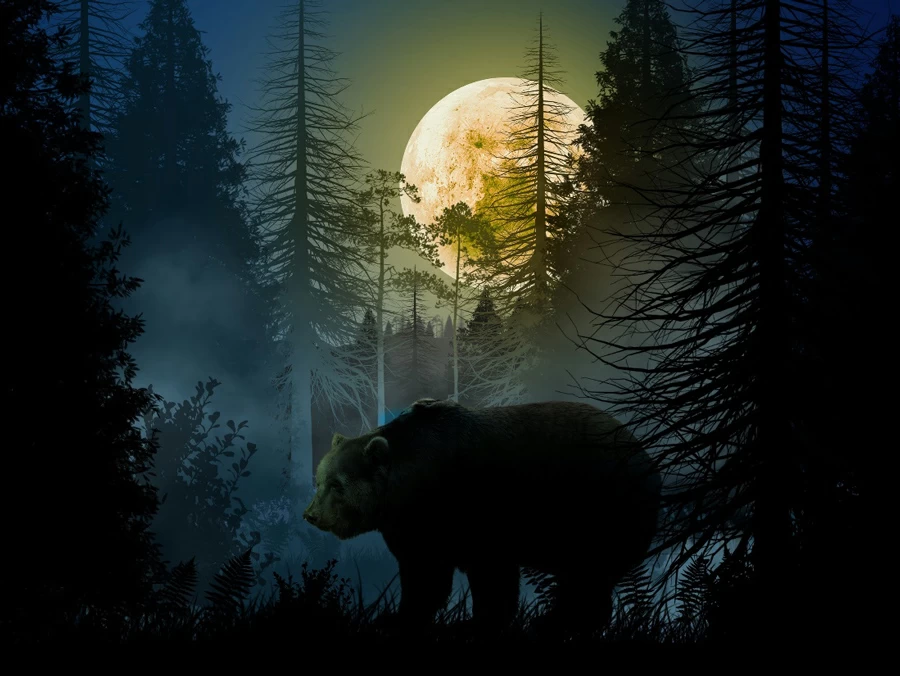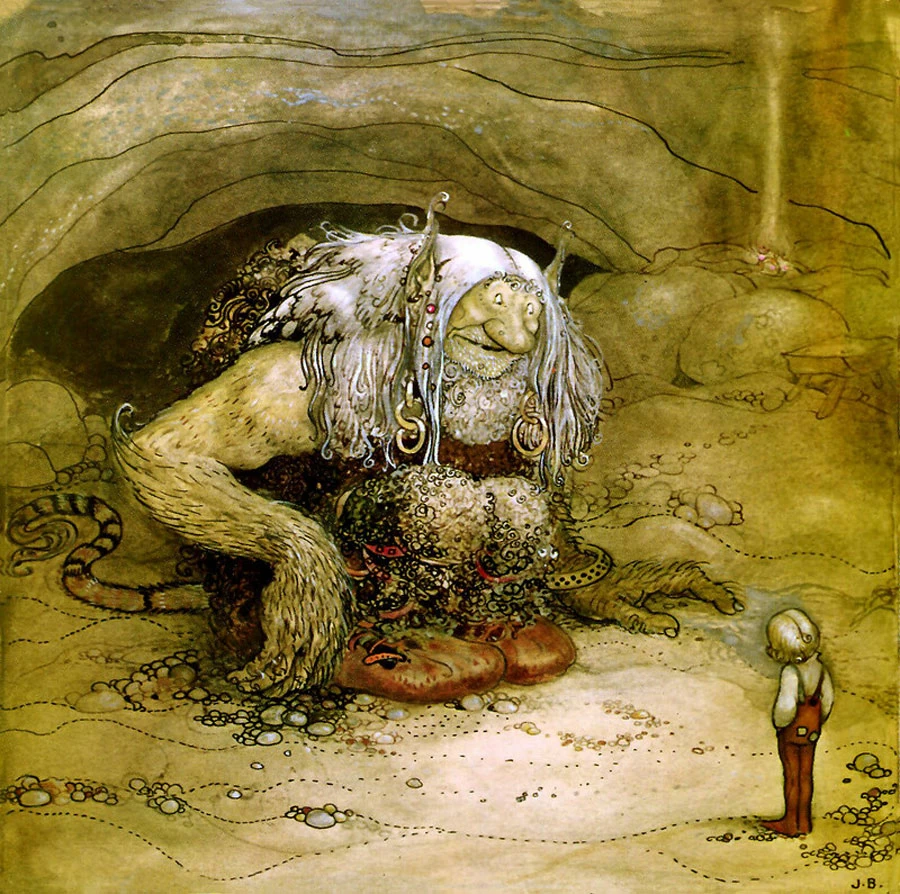First released in 2019 and with two seasons currently on Netflix, The Witcher has been a major success. Starring Henry Cavill and based on the books and short stories of Andrzej Sapkowski, the fantasy series is steeped in eastern European traditions and folklore.
One of the formidable monsters encountered in the Witcher universe is the Leshen. This animated forest spirit, manifest as a living tree and with an antlered elk skull for a head, is a formidable and terrifying opponent.
Like many other creatures seen in the universe of the Witcher this was not an invention but based on a real tradition in Slavic mythology. The Leshy, a god of the forests and of hunting, was a wild and malevolent entity who roamed the deepest and most inaccessible backwoods of eastern Europe.
The Leshy was most often depicted as a huge and gaunt male, colored gray and green and bearded. But he was known as a shapeshifter and could take any form as he sought to trick the unwary who walk through his forests, leading them to their doom.
Sometimes, he is also portrayed to have horns and is surrounded by packs of bears and wolves, the wild and dangerous animals of the forest. In a number of accounts, he is also said to have a wife named Leschachikha, and children.
According to the fairy tale, his wife is a cursed woman who either left or was forced from her village and lives in the deep forest with Leshy. Their children, mischievous like their father, are lost in the forest and are rarely seen.
Old Man of the Forest
When Leshy takes the shape of an old man, he appears to be extremely wizened. Tangled green hair covers his body from head to toe, and his skin is rough, like tree bark. As he walks, he causes the winds to blow through the trees.
His blood is said to be blue, adding a tinge of that color to his skin and allowing him to disappear easily into the woodland background, being very rarely seen. Most of the time it is his voice that is heard by people in the forest. He can be heard singing, laughing, or even whistling.
On spotting Leshy, he can be identified easily. While he appears like a man, his right ear, eyelashes, and eyebrows are missing. His head is also pointed, and he doesn’t wear a belt or a hat.

When in his native forest, he is a giant as tall as the trees. However, the moment Leshy steps out of the forest, his size shrinks and becomes as small as a single blade of grass. A number of stories also describe Leshy as having cloven hooves and horns. He wore shoes on the wrong feet to confuse trackers, and does not cast a shadow.
Slavic Mythology
Leshy is capable of changing his shape and taking the form of different animals such as bears and wolves. According to the beliefs of the Slavic people, he is a protector of the forests as well as the animals that live in the marshes and forests.
People who were kind to the forest spirit used to receive gifts from him. In the folk tales, the poor peasants received cattle. In some stories, princes would seek out the guidance of the Leshy to help them find their ideal princess.
Shepherds and farmers even made a pact with the Leshy in order to protect their sheep and crops. It was said that people who became friends with a Leshy could learn the secrets of magic.
However, Leshy is also considered untrustworthy and sometimes even an evil entity, who would trick women into the forest. Leshy also had a reputation for abducting children who were not baptized, and would even abduct children entering the forest to catch fish or pick berries.
In the forest, he would also lead travelers astray to such an extent that they felt hopelessly lost. The intent of Leshy isn’t always evil in such cases: he is more a mischievous being who enjoys misguiding humans from their path. He is even known to visit a wayside tavern, drink vodka, and lead a pack of wolves back to the forest.

For people who were lost in the wood or have annoyed Leshy, it was recommended that they made Leshy laugh. In order to do so, people could try tricks like taking off their clothes, wearing shoes on the wrong feet, to try and confuse the spirit.
- The Beast of Gevaudan: Monstrous Wolf or Something Else?
- Aokigahara Forest of Japan: The Suicide Paradox
Another way of driving away the forest monster was to recite prayers alternatively with curses. Applying salt to fire was considered yet another means of getting rid of Leshy.
The Living Forest
At times, more than one Leshy is believed to live in the forest. According to some folk tales, these Leshen lived in an enormous palace, along with beasts and serpents of the forest. During the winters, they would hibernate here. However, once spring arrived, the entire tribe of Leshen went running through the woods, yelling and screaming.
In the summer times, the Leshy was most active and most commonly played tricks on humans. However, those tricks were rarely known to cause any harm to humans at this time.
During the autumn, they tended to be more quarrelsome. They looked for opportunities to frighten and fight with other creatures in the forest as well as with the humans. During the final cold days of the year, when leaves start falling from the trees, the Leshy disappeared and went to hibernate once again.
The Leshy clearly represents a personification of the mystery and the dangers of the Slavic forests to the unwary. Silent in winter and safer, if disorienting, in the summer, the old wizened tree-man is a summation of what can befall you if you step into the forest unprepared.

This monster finds its analogue in the Scandinavian trolls, or the Wendigo of Native American myth. Maybe there once was an old man of the forest, some human or creature who inhabited the dense and inaccessible wilderness of eastern Europe.
Maybe, somewhere in the leafy darkness, he is out there still, ready to snatch unwary children who venture too deep into the woods. But at least, this time, we have Henry Cavill to save us.
Top Image: Common depiction of the Leshy. Source: Н. Н. Брут / Public Domain.
by Bipin Dimri